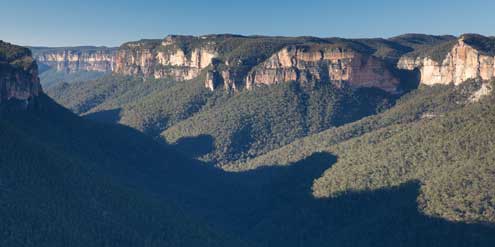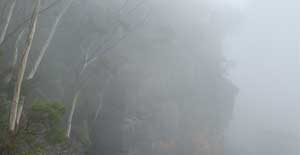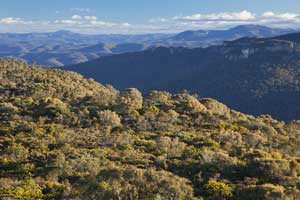 Grose Valley (Ian Brown)
Grose Valley (Ian Brown)
While this is pretty true for the central, Blue Mountains Range area, it doesn't do justice to the complexity of that terrain or the variety of other landscapes that make up the whole Greater Blue Mountains.
The origin of the Blue Mountains is a fascinating geological story of deposition, vulcanism, earth movements and erosion – a story that is still not fully understood.
The resulting landscape diversity controls everything else – microclimates, soils, flora and fauna.
The escarpment landform close to the coast creates a moist maritime climate, so the heights of the Blue Mountains experience frequent atmospheric fogs.
Foreground Triassic sandstone gives way to complex ridge topography of older Lachlan Fold Belt rocks.
Permian sandstones cling to the quartzite heights of Mount Cloudmaker (right background), while the Tertiary basalt remnant of Mount Colong breaks the left horizon.


